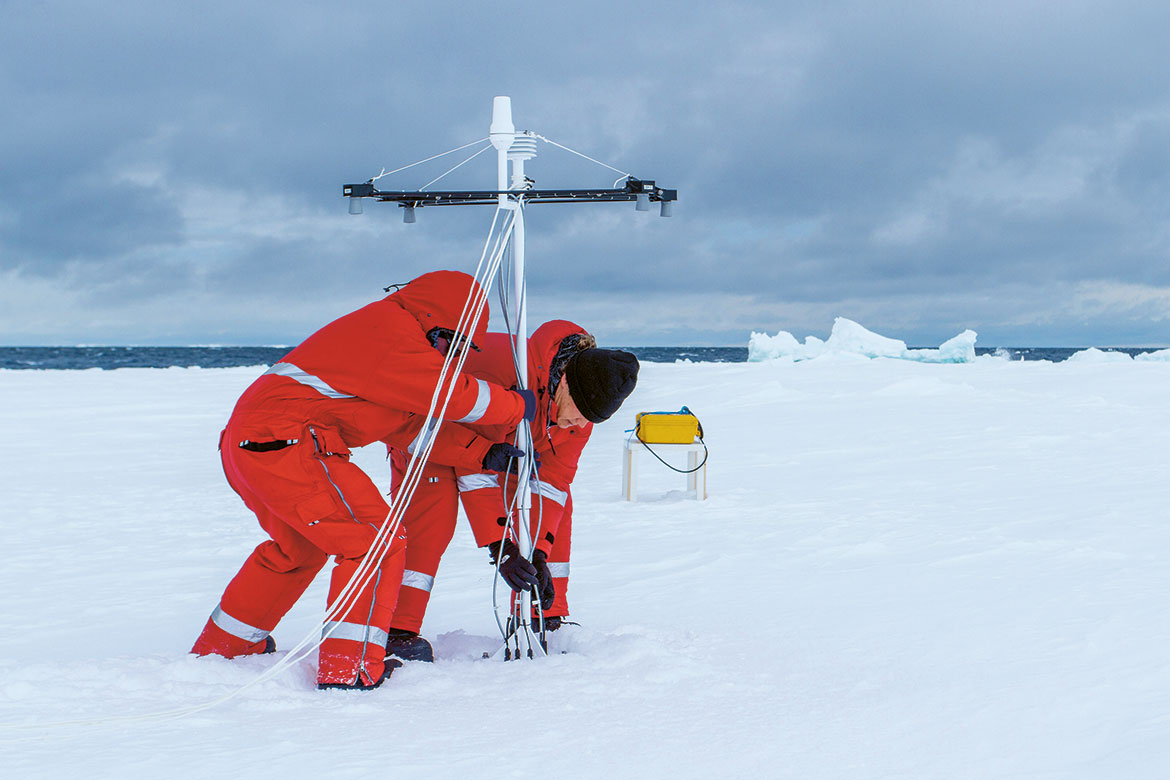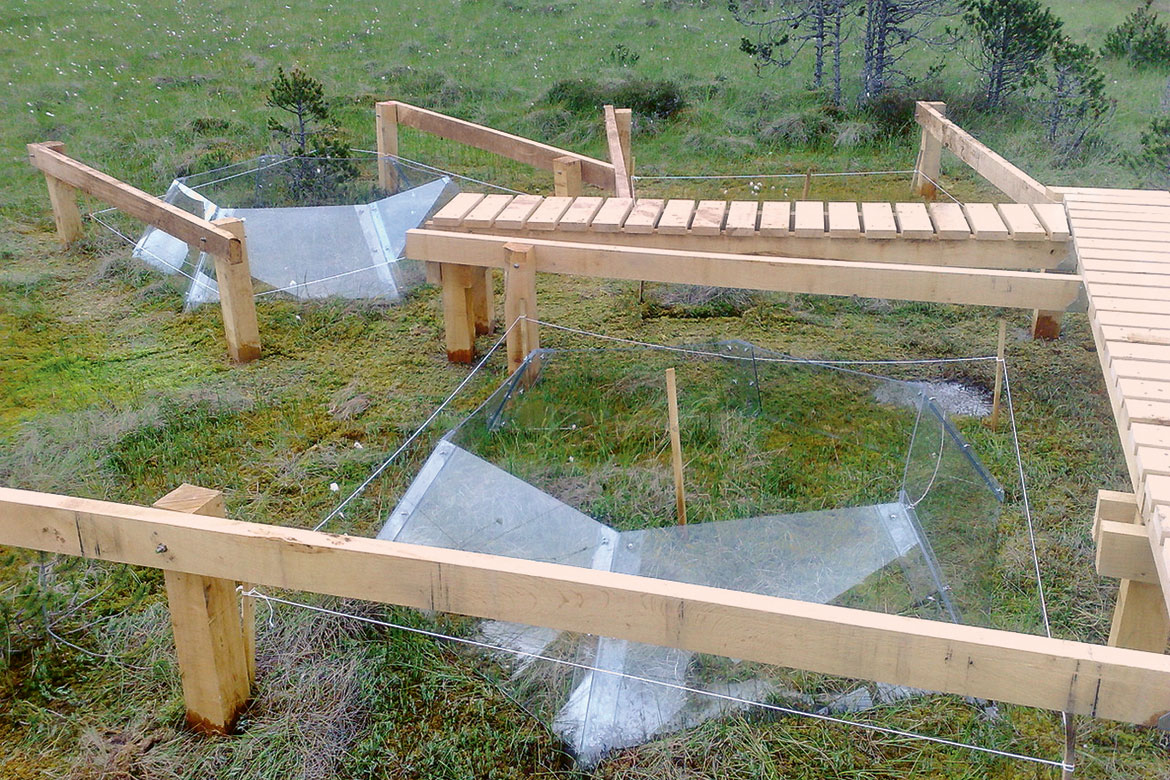Climate models complicated by polar snow
How quickly is the ice melting at the polar caps? Trying to predict this is a complex matter – because of the overlying snow. A new computer model is helping.

Meteorological equipment in the Antarctic’s Weddell Sea is providing data for a new climate model. | Picture: Marcel Nicolaus
Global warming is making the ice melt at the polar caps. Computer models calculate how much polar ice still exists, and they make predictions about how quickly it’s disappearing. But these models need to be more precise, especially with regard to the snow cover, because the snow that lies over the polar ice acts like an insulating blanket and has a big influence on how quickly the ice melts. This is why researchers from EPFL and the Institute for Snow and Avalanche Research in Davos (SLF), along with colleagues from Germany, have now developed a model that incorporates a lot of detail about the impact of snow.
“Snow is much more complex than ice”, explains Michael Lehning, a group leader at SLF. On the one hand, the snow slows down the melting of the ice because it is better than the ice at reflecting the light of the sun. But on the other hand, the snow cover works like an insulation blanket. It retains warmth in the ice and prevents sea water from freezing to make yet more ice. Moreover, there are levels within the snow with different micro-structures that conduct warmth differently – and these then have a varying impact on the ice. And lastly, snow can also promote the creation of ice – simply because the weight of it presses the floating ice plates deeper into the sea, making more water freeze.
In order to depict this complexity, the researchers have chosen a contrarian approach. Instead of incorporating snow into an existing ice model, they have expanded their model for snow – called ‘Snowpack’ – by including a module for sea ice. To this end, they use measurement data from weather buoys in the Weddell Sea in the Antarctic.
“This new model offers a better depiction of the influence of snow on polar ice”, says Lehning. He and his researchers are currently working to incorporate Snowpack in a global weather model. “This would enable us to create a simulation for the whole of the Antarctic”.




